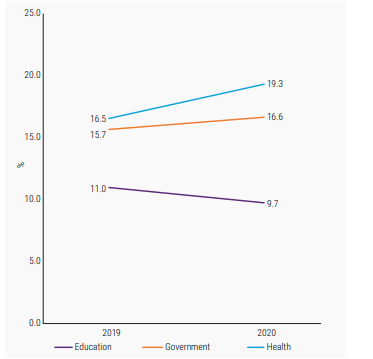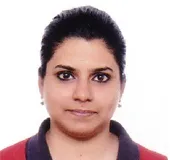-
CENTRES
Progammes & Centres
Location
Although financing infrastructure in the developing economies of the Indo-Pacific region has become an increasing international priority, quality education remains elusive

This essay is part of the series “Reimaging Education | International Day of Education 2024”.
With overlapping challenges of pandemic, climate crisis, and ongoing global conflicts impacting supply chains across the world, the Indo-Pacific is under a cash crunch. As a geographic expanse viewed more commonly from a strategic lens in the context of the increasing great power rivalry, the Indo-Pacific is simultaneously plagued by several development challenges. Given the rising commodity prices, local supply disruptions, and market imperfections in a post-pandemic world, several low-income economies and least-developed countries (LDCs) are disproportionately impacted. It faces an enormous challenge of plugging the gap for financing for several of the sustainability targets. Although financing infrastructure in the developing economies of this region has become an increasing international priority, quality education remains elusive. Embodied by the UN Sustainable Development Goal (SDG) 4, this goal recommends minimum spending of at least 4 percent of GDP and/or 15 percent of national expenditure on public services. However, according to a World Bank-UNESCO report released in 2022, despite a marked loss in learning due to the pandemic-induced school closure and restrictions, overall public spending on education has remained stagnant. The report further notes that with the start of the pandemic, bilateral aid to education has taken a massive hit while households continued to shoulder the enormous costs of education in low-income countries. As of 2021, official development assistance (ODA) for education stood at US$ 12.1 billion—a marginal drop from US$12.6 billion in 2020. This reflects a ‘diminished political prioritization of education’ by the international development providers which will certainly impact long-term economic recovery, human capital development, and inclusive-cum-sustainable growth (Figure 1).
Figure 1: Diminished Priority to Education in total aid flows in 2020

 Source: World Bank, OECD CRS database (2022)
Source: World Bank, OECD CRS database (2022)
Although the Indo-Pacific has experienced significant success in encouraging participation to join schools, it has a long way to go in improving access and quality of education for all. For instance, according to the UNESCO, approximately 27 million children and adolescents in the region remain illiterate, 95 percent of whom are in Southern Asia[1]. Moreover, it has been observed that almost 50 percent of the children lag in basic foundational skills reflecting their inability to read and understand a simple sentence at the age of 10, despite receiving primary education. This indicates a larger ‘learning crisis pushing back the most disadvantaged learners behind’ in this region. Of course, the education sector is hindered by a host of other interconnected and overlapping barriers too. The socio-political milieu based on a particular governance model along with the economic impediments of inclusion, equity, and accountability is beyond the education sector. The vulnerability of this region to extreme weather events and disasters resulting in large-scale displacements and destruction of property has a direct impact on SDG 4. As per UNESCO 2023 figures, about 30.7 million people were displaced by natural disasters—out of which 21.3 million belonged to the Indo-Pacific. In addition, the need to increase access to digital technologies and related services have become imperative in a post-pandemic world. This reiterates the need to have a human rights-based approach towards addressing the challenges of SDG 4 which has links across the spectrum of Agenda 2030 like climate action (SDG 13), reduced inequalities (SDG 10), gender equality (SDG 5), potential labour market disruptions of digitalization (SDG 8), biodiversity loss (SDG 15), ocean protection (SDG 14) and building robust global partnerships (SDG 17).
The socio-political milieu based on a particular governance model along with the economic impediments of inclusion, equity, and accountability is beyond the education sector.
Significant international efforts are underway to build back better and navigate the potential trade-offs in providing equitable, inclusive, and quality learning. For example, UNICEF and the International Telecommunication Union (ITU) launched the GIGA initiative in 2019 with the goal of making school connectivity universal and meaningful. Focusing on digital exclusion, GIGA functions on three pillars—Map the real-time location of schools and their connectivity status; Model the programmes, finances, and infrastructural mechanisms required; and Contract the connectivity services to the local government and agencies. Under the Global Gateway initiative, the European Union (EU)’s first deliverable is the EU-Africa Global Gateway Investment Package. This scheme aims to boost public-private investment for the creation of sustainable jobs and growth in Africa, with a special focus on education and skills. EU’s other partner initiative with UNESCO called the Global Partnership for Education (GPE) looks at smart financing mechanisms to restructure the aid architecture on education. It aims to foster an enabling environment for accelerating progress on SDG 4 by ramping up access to digital technologies, promoting inclusive education, and mobilising catalytic capital to leverage and support domestic finance for education in low-income and crisis-affected countries. Another example is the Kaizenvest fund working in the five countries—India, Bangladesh, Vietnam, Indonesia, and the Philippines—of the Indo-Pacific. Supported by Proparco—a development finance institution (DFI) owned by the Agence Française de Développement (AFD)—this fund, driven by a private sector entity, mobilises capital for introducing innovative finance and technology-led education and learning systems for economically weaker sections of the society. The United States Agency for International Development (USAID) is also involved in scaling private investments for primary school education in India under its Global Education Strategy launched in 2011. However, there exists a glaring gap between policy and practice. As per UNESCO’s Global Education Monitoring Report 2023, for low-income and lower-middle-income countries almost US$ 3.7 trillion is required to fulfil their national targets for education under Agenda 2030. Add to this, the cost of digital transformation in education. This situation calls for an urgent need to rethink the existing paradigms of ODA and tap innovative financing avenues. Blended finance could be the answer. Engaging the private sector more closely with public funding can help fuel the institutional capital and cushion the different layers of risks involved in channelling money. This also means we should encourage a multistakeholder conversation, including civil societies, sub-national agencies, philanthropies along traditional development providers, particularly speaking of the Indo-Pacific. Understanding the needs and demands of the vulnerable communities carries as much weight as directing adequate finance in that region. This will help in maintaining the equilibrium between the quality and quantity of finance for essential sectors like education. Here, the Southern-driven partnerships led by India, China, Brazil, Indonesia, and also South Africa can help bridge the North-South divide to ensure future pathways for sustainability in the region.
Swati Prabhu is an Associate Fellow with the Centre for New Economic Diplomacy (CNED) at the Observer Research Foundation.
[1] Afghanistan, Bangladesh, Bhutan, India, Iran, Maldives, Nepal, Pakistan & Sri Lanka
The views expressed above belong to the author(s). ORF research and analyses now available on Telegram! Click here to access our curated content — blogs, longforms and interviews.

Dr Swati Prabhu is Associate Fellow with the Centre for New Economic Diplomacy at the Observer Research Foundation. Her research explores the interlinkages between development ...
Read More +